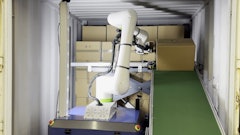
American consumers could lose $31 billion in spending power if U.S. tariffs are raised on common household products like microwaves and T-shirts imported from China, according to a new report released by the National Retail Federation (NRF).
“Even though significant efforts have been made in recent years to diversify sourcing, China continues to play an important role in the supply chain of many retailers and other global industries, from sourcing raw materials to manufacturing and production,” says Jonathan Gold, NRF VP of supply chain and customs policy. “It would be impossible for American families to escape the higher costs from dramatic tariff increases on necessities such as apparel, footwear, furniture, appliances and toys.”
REGISTER NOW for SCN Summit, where Gold will be talking about the State of E-Commerce.
Key takeaways:
- Policymakers are expressing a growing interest in changing trade policy and practices between the United States and China, including the potential removal of China’s PNTR status, a legal status that extends to China the same tariff rates applied to other U.S. trading partners.
- Higher U.S. tariffs on imports from China resulting from the revocation of PNTR for China would cost American consumers $31 billion, or $240 per household, in higher prices for widely used products.
- The prices of toys would increase by more than 21%, or $93 per household.
- Household appliances would increase by nearly 7%; shoes by nearly 5%; furniture by 4%; and apparel by nearly 2%.
- Low-income households, which spend greater shares of their incomes on these products than high-income households, would be hit the hardest.
- These cost increases would negatively impact the effort to lower inflation for households overall.

























